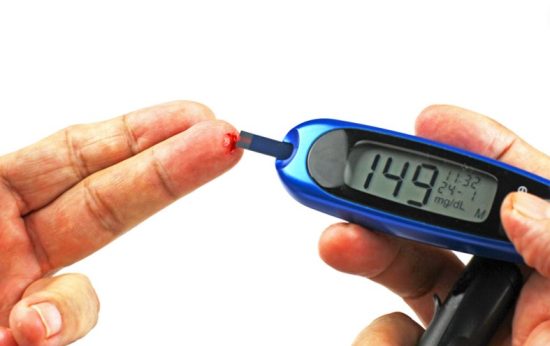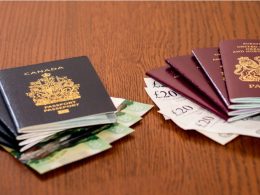Are you worried about your blood sugar levels? It’s essential to know what range is considered normal and when it becomes dangerous. In Canada, diabetes affects millions of people, which makes monitoring your blood sugar levels vital. High blood sugar can lead to severe complications such as nerve damage and kidney failure, but knowing the symptoms and causes can help prevent these issues. So let’s dive into the question on everyone’s mind: What level of blood sugar is dangerous in Canada?
What is Blood Sugar Level?

The blood’s level of glucose is referred to as your blood sugar. Glucose is a type of sugar that comes from the breakdown of carbohydrates in your food. It’s an essential source of energy for our bodies, but too much or too little can cause problems.
The hormone insulin regulates the amount of glucose in our blood by transporting it into cells where it’s used as fuel. When there’s not enough insulin available, glucose remains in the bloodstream, causing high blood sugar levels.
On the other hand, low blood sugar levels occur when there isn’t enough glucose available for energy. This can happen if you skip meals or exercise excessively without replenishing your body with food.
Maintaining healthy and stable blood sugar levels is crucial for overall health and well-being. Understanding what factors can affect these levels is key to managing them effectively and preventing complications down the road.
Normal Blood Sugar Range in Canada
The normal range for blood sugar levels in Canada is an important indicator of overall health and well-being. The main source of energy for the cells in our bodies is blood sugar, often known as glucose. The body maintains a delicate balance of blood sugar levels to ensure optimal functioning.
A fasting blood sugar test measures glucose levels after not eating or drinking anything except water for at least eight hours. For most people, a normal range falls between 3.6-5.9 mmol/L (millimoles per litre). However, this may vary depending on various factors such as age and medical history.
It’s crucial to note that while low blood sugar can be dangerous and cause symptoms like confusion and loss of consciousness, high blood sugar can lead to serious complications like heart disease, nerve damage, kidney failure and vision problems if left untreated.
Regular monitoring of your blood glucose level can help keep it within the healthy range by making necessary lifestyle changes such as regular exercise and following a balanced diet rich in whole grains, fruits and vegetables with minimally processed foods or added sugars.
Maintaining healthy blood glucose levels is key to preventing complications associated with diabetes in Canada.
What Level of Blood Sugar is Dangerous in Canada?

Blood sugar, or glucose, is a vital component that provides energy to the body’s cells. However, when blood sugar levels become too high, it can cause several health problems.
The normal range for blood sugar levels in Canada is between 3.5 -7.8 mmol/L before meals and less than 10 mmol/L two hours after eating.
If your blood sugar level goes above 10 mmol/L and remains elevated for an extended period, it can be dangerous as it may lead to diabetes complications such as nerve damage, heart disease and kidney failure.
Symptoms of high blood sugar include increased thirst and urination frequency, blurry vision (caused by changes in fluid balance), and fatigue due to decreased energy production from glucose metabolism.
Causes of high blood sugar include lack of physical activity or exercise routine, poor diet choices like consuming sugary drinks or junk food frequently; stress which causes an increase in cortisol hormone production leading to insulin resistance over time.
Symptoms and Complications of High Blood Sugar in Canada
High blood sugar or hyperglycemia is a serious condition that can lead to various complications if left untreated. Some of the common symptoms of high blood sugar include frequent urination, increased thirst, blurred vision, fatigue and headaches. In severe cases, high blood sugar can cause vomiting and confusion.
- If left untreated for a long time, high blood sugar can increase the risk of developing type 2 diabetes and other related health problems such as heart disease, kidney damage and nerve damage. It’s important to take immediate action if you experience any symptoms of high blood sugar.
- Complications due to uncontrolled high blood sugar in Canada are not limited to physical issues only but also mental problems such as depression and anxiety. This is because living with chronic illness takes an enormous emotional toll on patients’ lives.
- To prevent these complications from occurring or worsening, it’s essential to manage your blood glucose levels effectively through proper dieting habits, regular exercise routines and medication prescribed by medical professionals. Regular check-ups with your doctor will help you keep track of your progress toward managing your condition better.
The best way to avoid serious health problems associated with high blood sugar is prevention through early detection and treatment. Be proactive about your health by monitoring your glucose levels regularly so that any changes can be addressed promptly before they turn into bigger problems later on down the line!
Causes of High Blood Sugar in Canada
High blood sugar, or hyperglycemia, can be caused by a variety of factors.
- One common cause is diabetes, either type 1 or type 2. In Canada, approximately three million people are living with diabetes and about one-third of these individuals don’t even know it.
- Certain medications can also cause high blood sugar levels as a side effect. These include steroids, beta-blockers, and some antidepressants. Additionally, illness or infection can temporarily raise blood sugar levels due to the body’s response to stress hormones.
- Another factor that may contribute to high blood sugar is poor diet habits. Consuming too many processed foods high in refined sugars and carbohydrates can lead to spikes in glucose levels.
- Lack of physical activity has also been linked to high blood sugar levels over time. Exercise helps increase insulin sensitivity which allows your cells to use glucose for energy more effectively and reduces the amount of glucose circulating in your bloodstream.
There are several possible causes of high blood sugar in Canada including underlying medical conditions like diabetes or medication side effects as well as lifestyle factors such as poor diet habits and lack of exercise.
Treatment Options for High Blood Sugar in Canada
When it comes to treating high blood sugar in Canada, there are a variety of options available.
- The first step is often lifestyle changes such as exercise and diet modifications. A healthy diet can help manage blood sugar levels by reducing the intake of carbohydrates and increasing fibre.
- In addition to lifestyle changes, medication may also be prescribed for more severe cases. Several types of medication can help regulate blood sugar levels including insulin injections, oral medication, or a combination of both.
- It’s important to work closely with your healthcare provider when managing high blood sugar levels. Regular monitoring is crucial in determining the effectiveness of treatment and making any necessary adjustments.
- Alternative therapies such as acupuncture and herbal remedies may also be considered in conjunction with traditional treatments but should always be discussed with a healthcare provider before use.
Treatment for high blood sugar in Canada varies depending on individual circumstances but usually involves a combination of lifestyle changes and medications tailored to each person’s unique needs.
How to Monitor Blood Sugar Levels in Canada?

Monitoring blood sugar levels is crucial for people with diabetes or those at risk of developing the condition. There are different ways to monitor blood sugar levels, and it’s essential to find a method that works best for you.
- One common way to monitor blood sugar levels is through finger-stick testing using a glucose meter. This involves pricking your finger with a lancet and placing a drop of blood on the test strip, which is then inserted into the meter.
- Continuous glucose monitoring systems (CGMs) are another option. These devices use sensors inserted under the skin to measure glucose levels in real time and transmit data wirelessly to a receiver or smartphone app.
- Another way to monitor blood sugar levels is through HbA1c tests, which provide an average of your blood sugar level over two to three months.
It’s important to work closely with your healthcare provider on how often you should check your blood sugar level and what target range you should aim for based on individual factors such as age, medical history, lifestyle habits, and insulin therapy regime.
Conclusion
It is essential to maintain a healthy blood sugar level to prevent serious health complications. As we have discussed, the normal range of blood sugar in Canada is between 4.0 and 7.8 mmol/L before meals and up to 10 mmol/L two hours after eating. Any reading above this range can be dangerous and may require medical attention.
If you experience any symptoms of high blood sugar such as increased thirst, blurred vision, or frequent urination, consult your healthcare provider immediately.
Remember that managing high blood sugar levels requires a combination of lifestyle changes such as regular exercise and a balanced diet, along with medication if necessary.
By monitoring your blood sugar levels regularly and taking appropriate action when required, you can help prevent long-term complications associated with diabetes and other conditions related to high blood sugar levels.
FAQs on what level of blood sugar is dangerous in Canada
1. What is an alarming blood sugar level?
Any blood sugar reading that is over 180 mg/dL or outside of your target range is typically regarded as being abnormally high. A blood sugar level of 300 mg/dL or above may be hazardous. If your readings are 300 or greater two times in a row, contact your physician.
2. At what blood sugar level should I go to the hospital in Canada?
If your blood glucose level is higher than 13.5 mmol/L (250 mg/dL) or you are ill, make sure to get your blood tested for ketones. If you detect moderate to high levels of ketones in your urine (or increased blood ketones when testing with a metre), contact your doctor in Canada or go to an emergency room at a hospital. DKA is a highly dangerous condition.
3. How can I quickly lower my blood sugar?
The quickest approach to drop your blood sugar is to use fast-acting insulin. Exercise is another quick, efficient method. However, if the situation is serious, you should visit a hospital. Hyperglycemia also referred to as high blood glucose, describes high blood sugar levels.










